
Corinth Canal
Corinth Canal: An Experience?
Finally, the time had come, and we reached Corinth. After so many hardships, we are glad to finally be here and soon be sailing in the Saronic Gulf. At the beginning of our journey, we constantly had the canal in mind, as it closes at the end of September, and we aimed to reach it on time.

September 14th, 2023: Corinth > Agios Thomas Diaporion
After a night in the city harbor of Corinth, we set off for the Corinth Canal. The city itself was rather disappointing and not particularly beautiful, but the harbor was sheltered and in close proximity to the canal. We had already purchased our transit tickets online and submitted all the required data. The process itself was rather tedious due to the poor website, but it was definitely worth it as we didn't have to go to the office in person. For those who do not do this online in advance, they must stop on the eastern side by the Saronic Gulf and complete the formalities at the canal office. Any experienced sailor can imagine how long this process can take.
We paid around €150 for our 33ft long Beneteau Oceanis 350. Although you specify your arrival time online, you still need to confirm it via radio beforehand. It is recommended to register with the canal authority via email 72, 24, 6, and 3 hours before arrival to obtain transit permission. Before our actual arrival, we only had to announce our arrival time. At 13:00, we reported our location and estimated arrival time to Traffic Control on VHF Channel 11 for the last time. We were instructed to wait upon arrival north of the entrance, in Ormos Corintho. At 13:35, we left the harbor and reached the bay in front of the canal after 45 minutes. The canal was well filled from east to west, and we observed many boats coming out of it. The canal is a monitored one-way street and can only be navigated alternately in convoy.
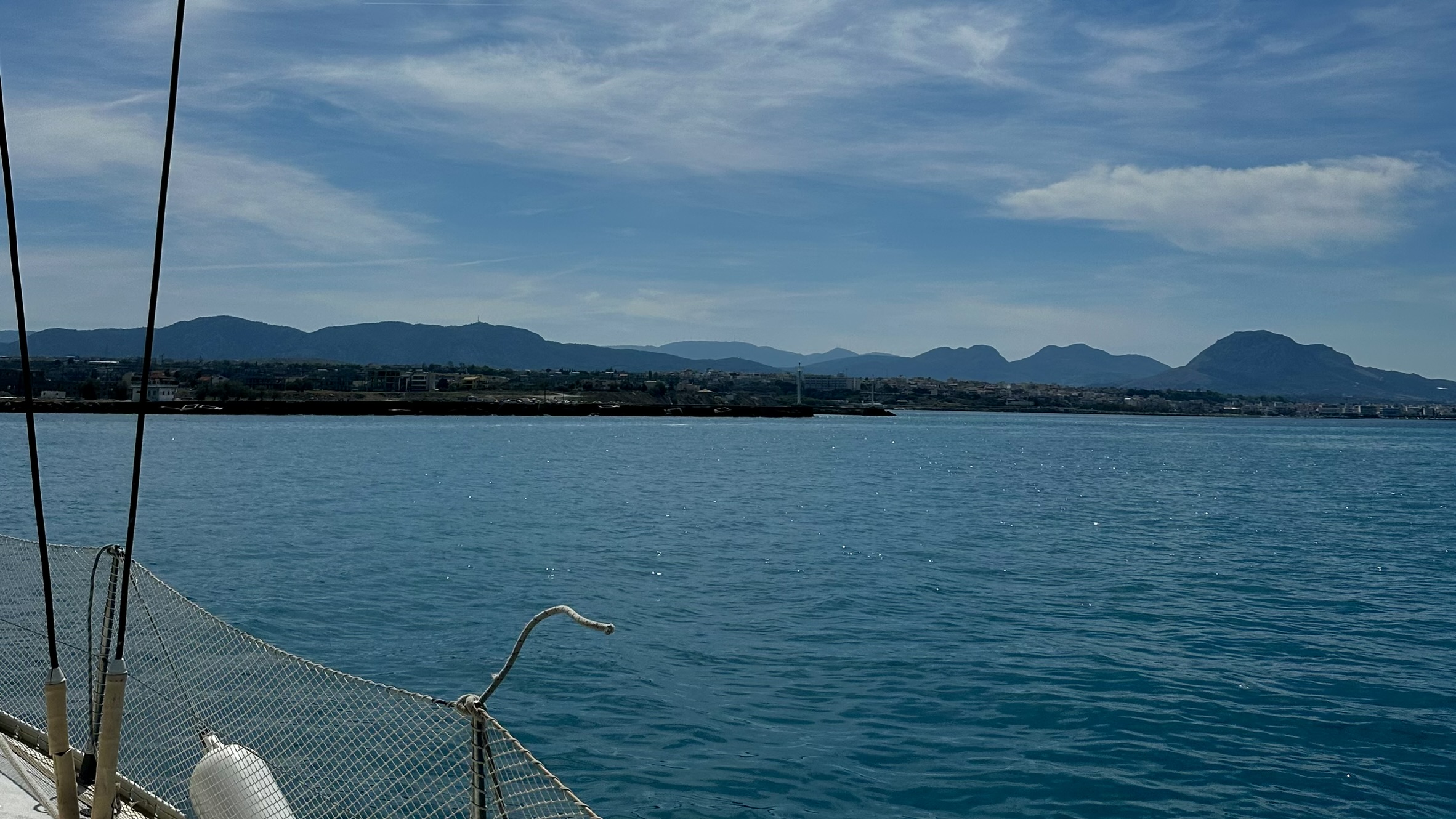
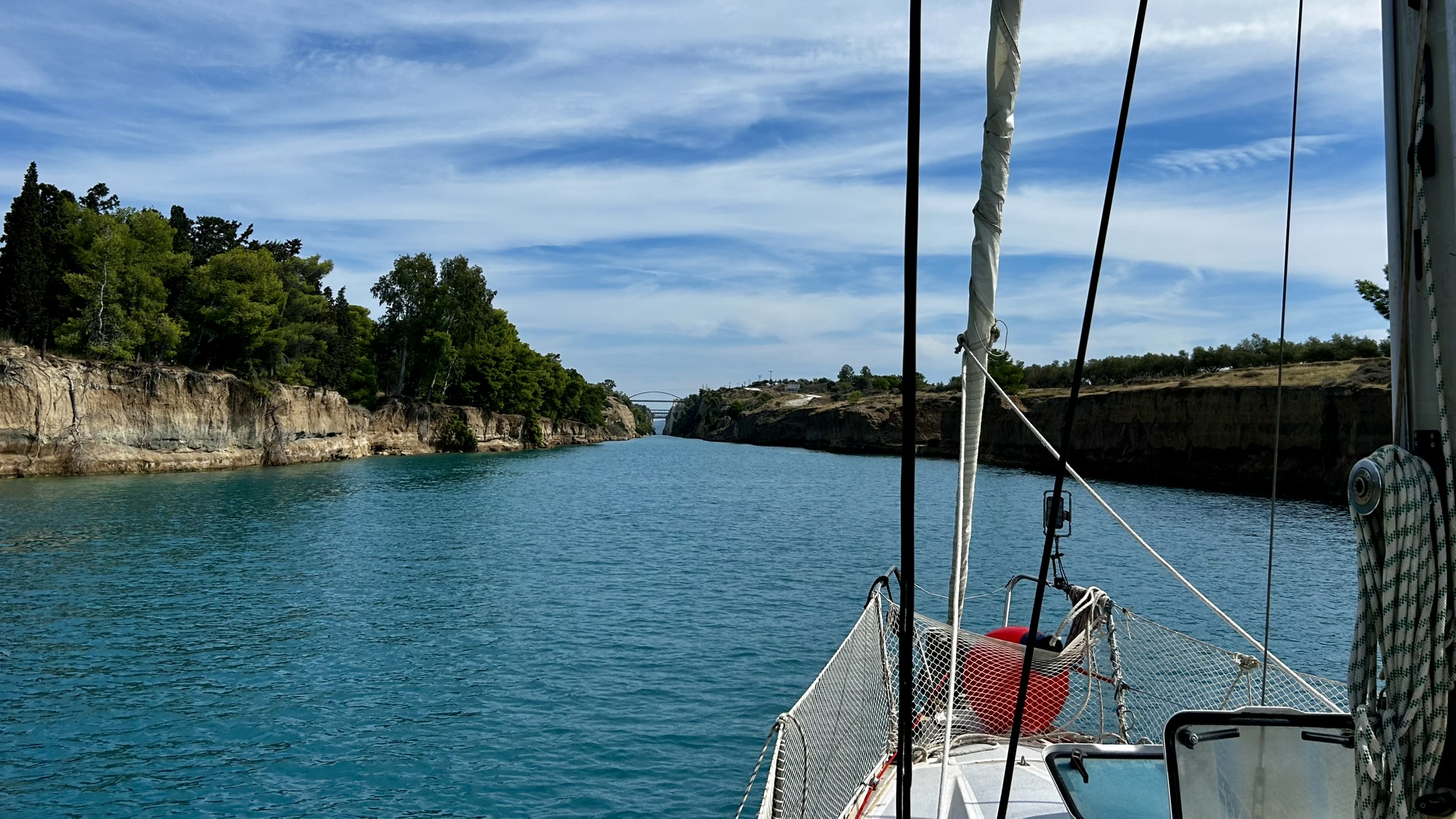
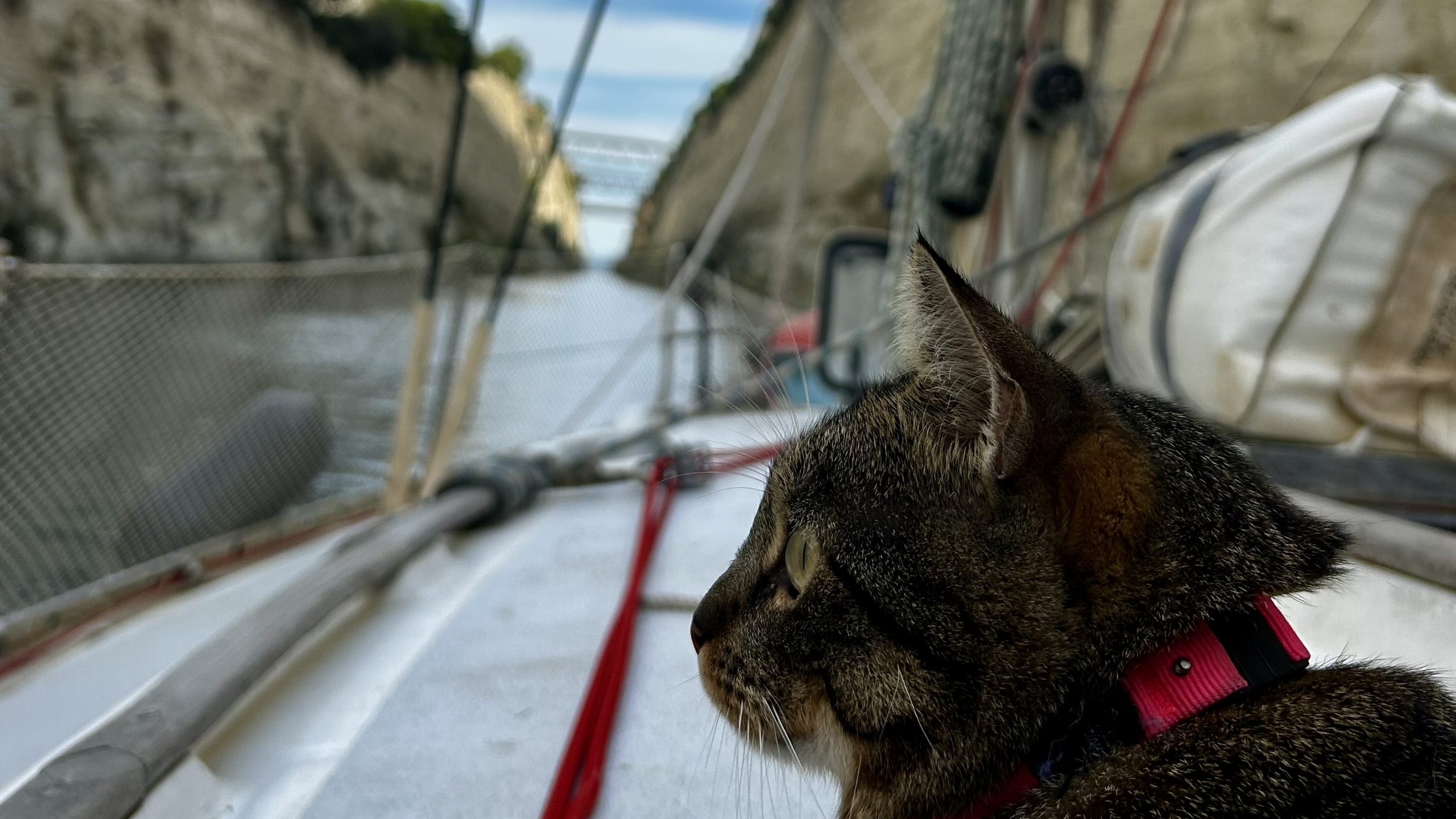
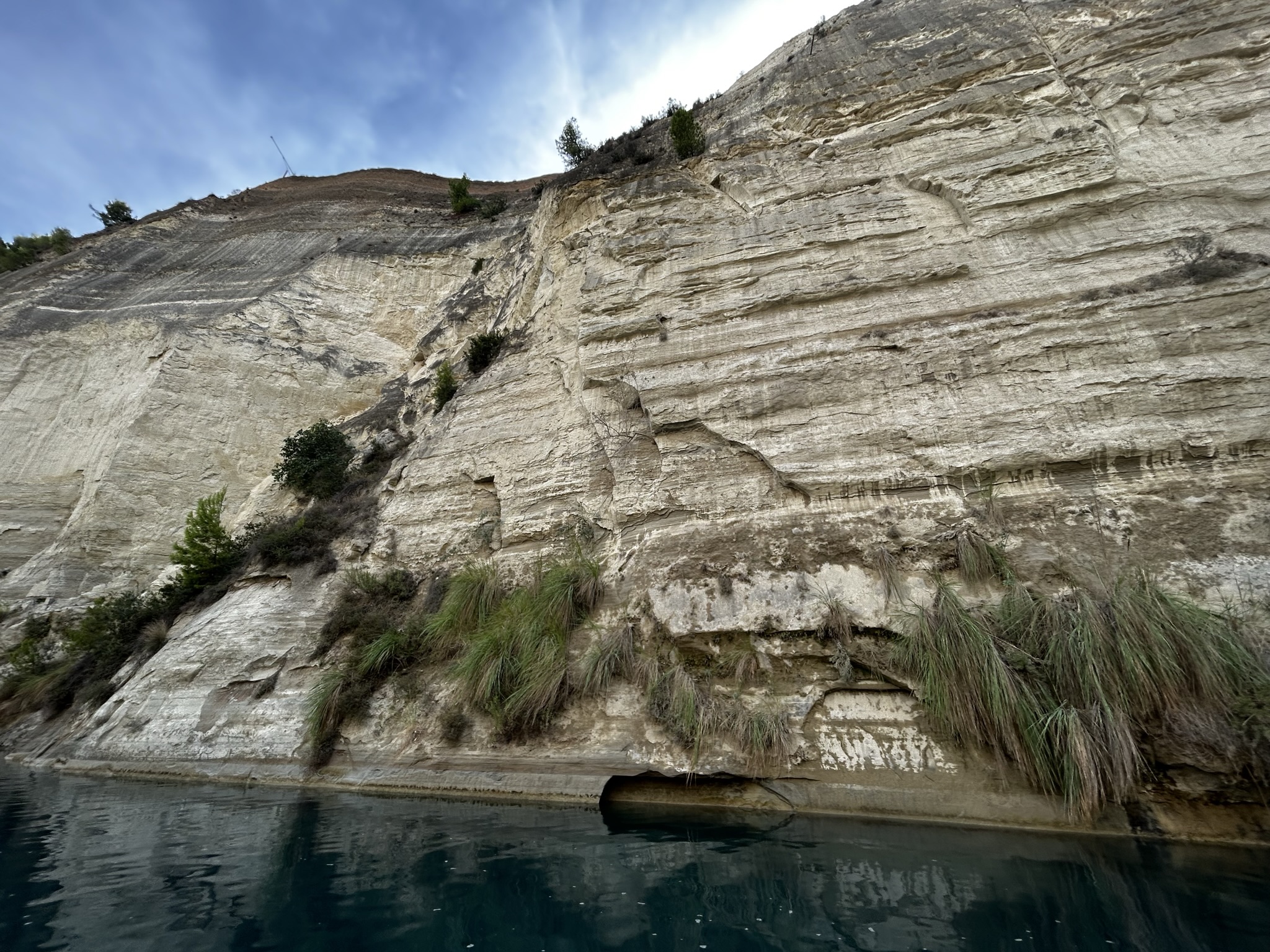
We wanted to capture this wonderful scenery not only with the phone but also with the drone. While I was at the helm, Lukas, our drone pilot, launched the drone. While everything seemed fine at the start, a warning suddenly appeared on the entire screen shortly after the drone was in the air: Drones prohibited. This information would have been useful beforehand. So, Lukas had to land the drone blind, only by looking up at the sky and the drone itself - fortunately, with success (though it crash-landed in the galley).
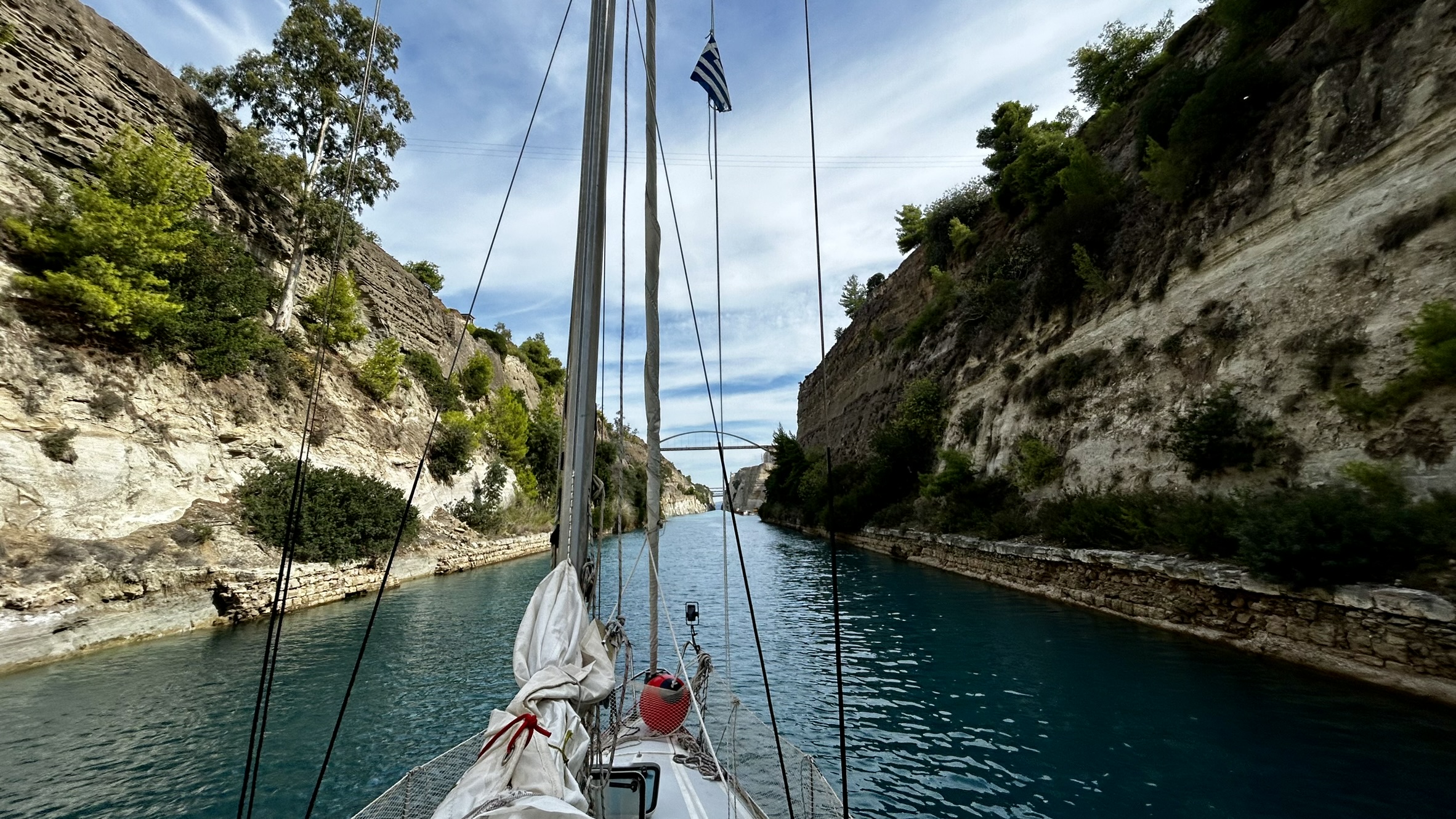
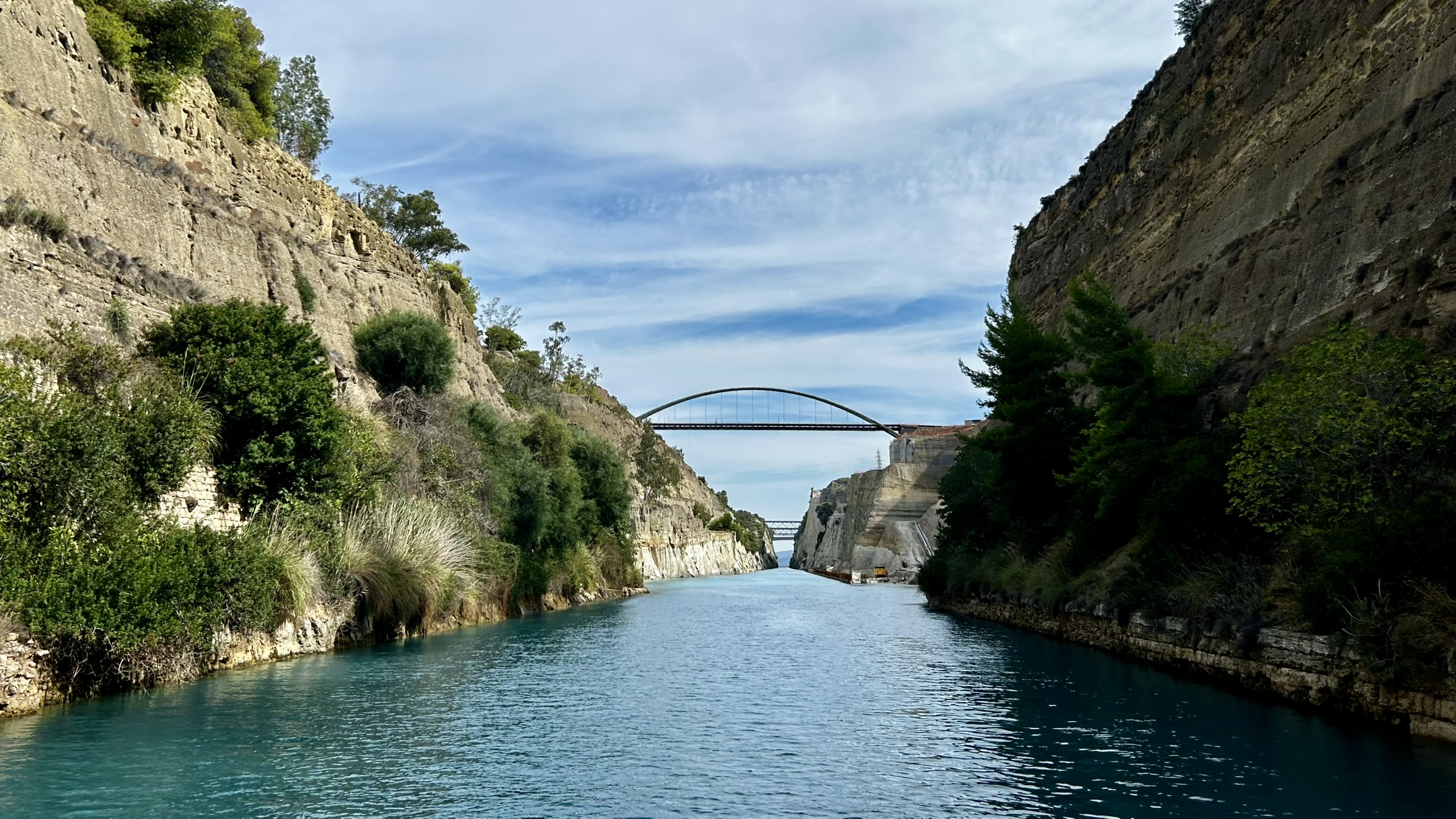
Forty minutes later, the pleasure was over, and we reached the Saronic Gulf at 16:05. From 16:15, we set a course of 125° towards our first destination, an uninhabited island between the canal and Aegina. Under Genoa - mainsail, as we don't have one anymore - we sailed at 13 knots of east wind with a speed of 4.8 knots. Seventy-five minutes later, we could already see the outlines of the island well and adjusted the course by 5 degrees.
Just before reaching the southwest coast of the island at 18:45, we suddenly saw something dark in the water. The first thought: a person. Could it be a diver? We see no buoy or flag marking the diver, which would be extremely dangerous. Actually, it reminded me of a seal, but can that really be possible? In Greece? As it turned out later: Yes, it was very likely a Mediterranean monk seal (Monachus monachus). This species of seal is one of the rarest and most endangered in the world. Wow, simply incredibly special and touching. We are so fortunate to have been able to observe it from a distance.

Originally, we wanted to anchor there right away but decided spontaneously to sail to the east coast of this small island, as the bay seemed too deep to us. Unfortunately, the other small bays or anchorages were either already occupied, too deep, or too exposed, so we ultimately turned back to the originally targeted bay in the southwest. At 20:20, we finally anchored at 10 meters, which is a good water depth. Finally in the Saronic Gulf - the last major milestone of the year has been reached. We did it, and we are finally here. Cheers to that!
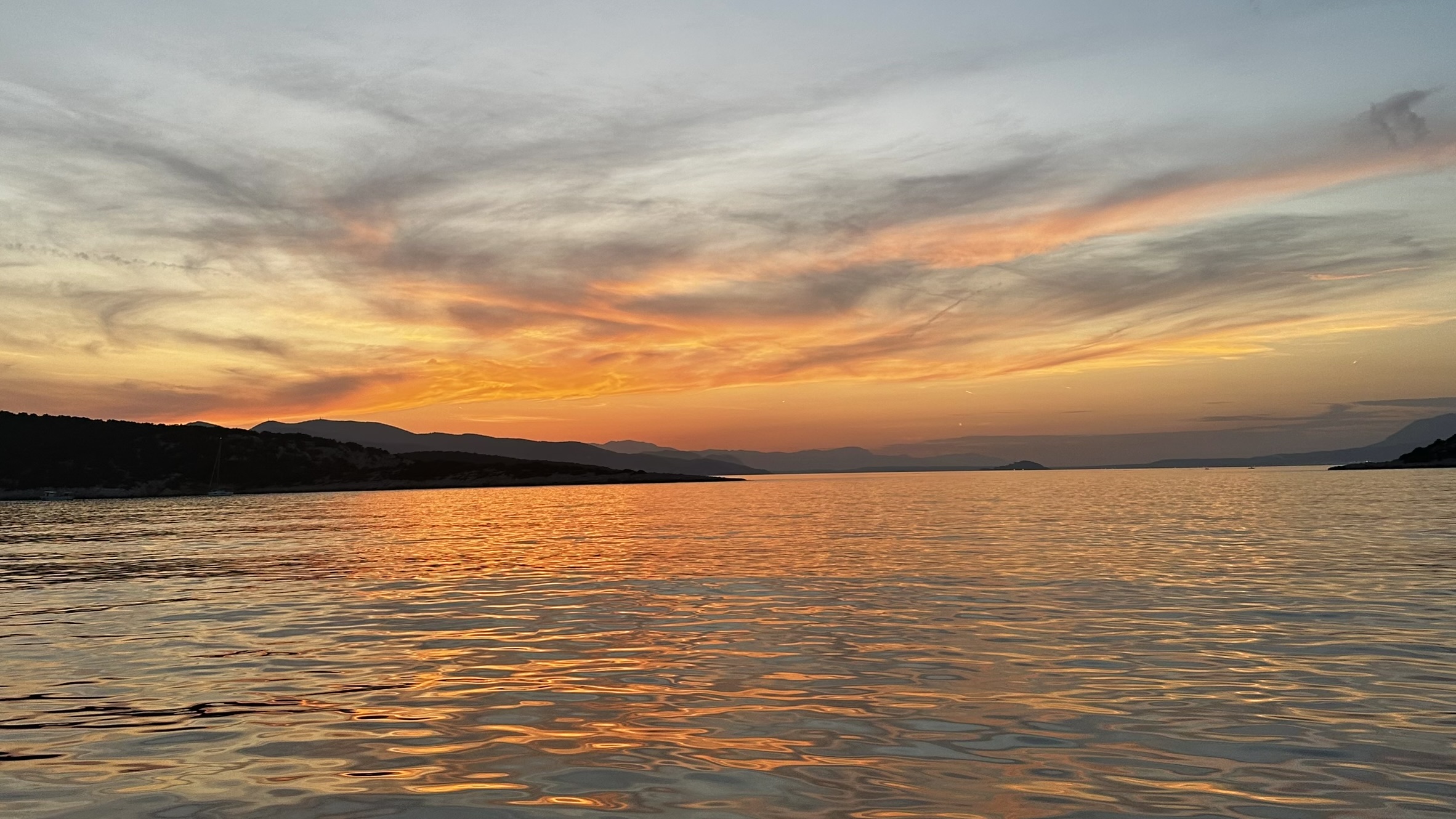
General Infos: Corinth Canal
The Corinth Canal is an impressive structure and a highlight for every sailor. It connects the Gulf of Corinth with the Saronic Gulf and separates the Greek mainland from the Peloponnese. The canal is approximately 3 nautical miles (6.3 km) long, at least 21 meters wide, and 8 meters deep.
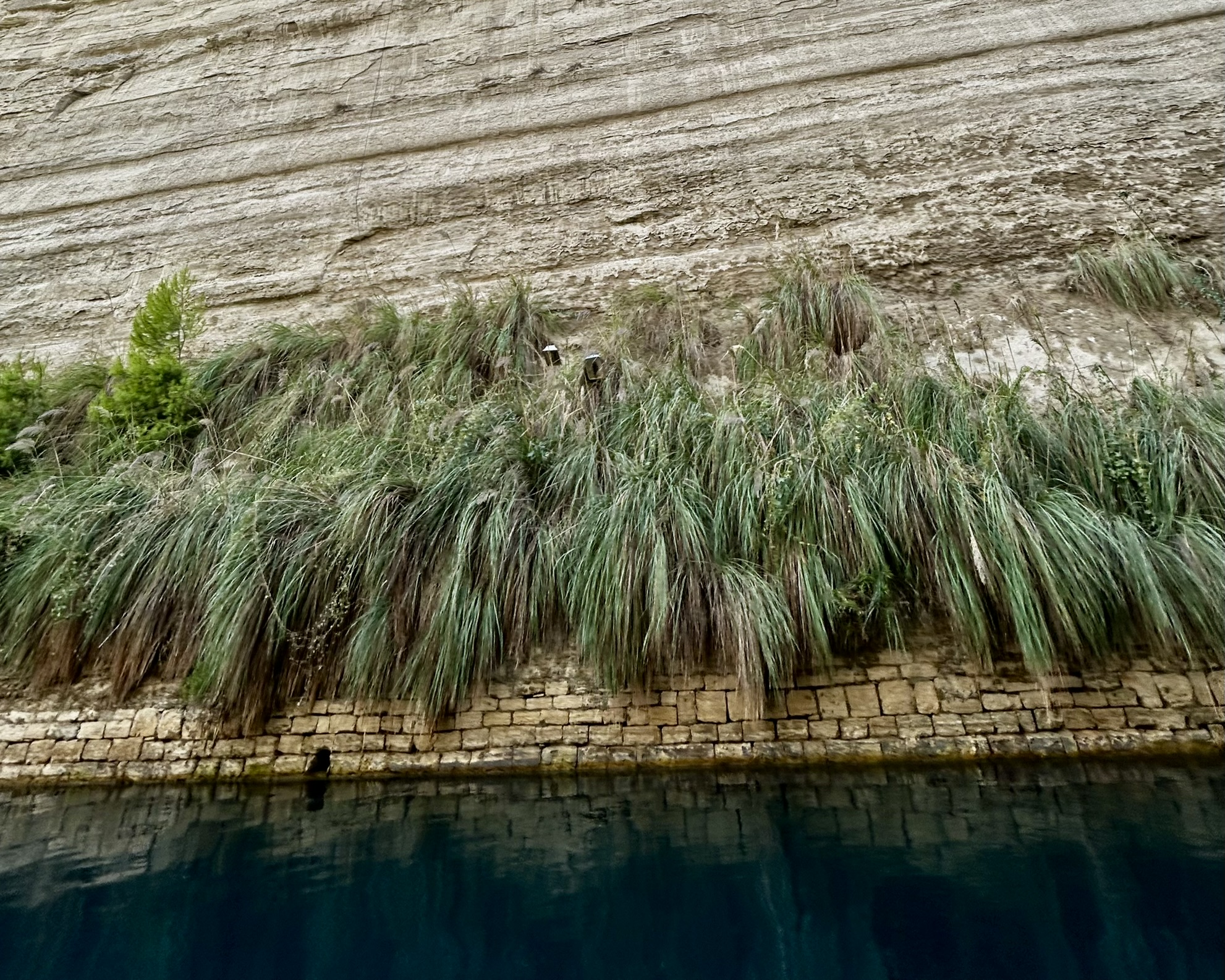
Additional Passage Facts
- Duration: 6 hours 45 minutes
- Distance: 24.8 nautical miles
